The activities of pests have a strong connection with environmental factors, with differing climates and seasonal changes acting as major determinants of pest actions, population dynamics, and distribution. With climate change ushering in an era of rising temperatures and altered weather patterns, there are great changes in pest behavior. Such changes bode well for agriculture, public health, and pest management strategies. It is the purpose of this blog to discuss climate and seasonal factors affecting pest behavior, dealing with the interactions, and what this means for the future.
Factors Affecting Pest Behavior: The Role of Climate
Climate factors include temperature, humidity, precipitation, and extreme weather events that may affect the pest behavior. These environmental conditions will define where pests will see, how fast they breed, and their survival.
Temperature
Rapid Reproduction: Pest reproduction is hastened by warmer temperatures and leads to rapid population growth. This is a particular concern with respect to diseases spread by mosquitoes and ticks, which therefore reproduce more as a result of accelerated temperature. Extended breeding seasons favor these pests residing in warmer climates throughout the year, which increases the chances of transmission of diseases. Therefore, the changing behavior needs to be considered in the effective management of such changes.
Extreme Heat Effects: At times, extreme heat can be detrimental to the pest population, impairing growth or destroying eggs and larvae. Pests that dry out may lose numbers in that way. Nevertheless, certain pests gain resistance to extreme conditions. Being aware of such dynamics is essential in the formulation of effective pest control strategies. Climate change may sway these patterns in one direction or another.
Migration: Temperature increases have resulted in pests leaving the clement conditions of the tropics for temperate zones better suited to their development. That process then creates pest difficulties in areas heretofore free from pest attacks. Local ecosystems may be ill-equipped to deal with these invaders, and hence there may be significant agricultural and public health consequences. While newly advancing pests will come into contact with local predatory and competitive populations, this will also affect pest population dynamics.
Humidity and Precipitation
Ideal Breeding Conditions: These high humidities make mosquitoes thrive, as they require standing water for their reproductive cycle; consequently, most areas that have very frequent rains or flooding witness mosquito outbreaks. The presence of standing water allows space for larvae incubation, leading to increasing adult populations. A great method of control involves lessening or getting rid of standing water so mosquitoes do not reproduce. Monitoring is also imperative to pick up the first signs of an attack.
Population Fluctuations: Excess rainfall would provide enough moisture to act as a favorable factor for habitat maintenance, increasing the pest population. However, excessive rains can wash away the eggs and larvae, resulting in a decrease in population. This lovely balance describes the intricate relationship that exists between precipitation and pest dynamics. Thus, understanding these fluctuations will aid in the prediction and management of pest outbreaks. Changes in climate might modify such patterns and, hence, warrant adaptive management strategies.
Drought Effects: Due to drought conditions, pests may be forced indoors to seek water and shelter, adding to infestations in urban areas. For instance, rodents look for water sources in homes during dry periods. If this situation is not corrected, it can create a real nuisance. Getting rid of these pests means sealing the entry points and eliminating all attractants, namely food and water. Regular inspections by a qualified pest control operator will help identify the first warning signs of an infestation.
Rising CO₂ Levels
Plant-Pest Interactions: Changes in CO₂ concentration change the nutritional value and defensive mechanisms of host plants, hence interfering with pest behavior. If elevated CO₂ weakens the ability of plants to resist infestation by aphids or fungi, increased crop pest pressure may follow due to the increase in susceptibility of affected plants to infestation. Being aware of these plant-pest interactions is necessary for the development of future pest management practices that will keep plant health in mind.
Nutritional Changes: The nutritional quality of plants for pests might be altered as a result of changes in plant chemistry brought about by increasing CO₂. In fact, also affected are the growth rates and reproduction of pests, the outcome of which would be to strengthen the pest population.
Pest Behavior: Seasonal Patterns
The activity of pests is affected chiefly by seasonal changes. Different environmental conditions favor pests in certain seasons.
Spring: Awakening and Breeding
Emergence from Hibernation: Warm weather coming into spring brings many different kinds of pests out of hibernation, such as ants and termites. Most of these pests become active as they seek food sources and establish new colonies. This is an important window for pest control, as early intervention can keep pest populations from expanding later in the year. Effective approaches include proactively seeking the first signs of activity and using preventive measures to make such places unattractive to pests.
Breeding Season: Spring is the breeding season for many insects and is also a time when their populations swell. This is a critical time for agricultural pests such as aphids and whiteflies that can damage crops as they begin to grow. Effective management strategies use integrated pest management methods that include several controls. Monitoring is critical to detecting the first signs of pest activity and preventing them from growing into heavy infestations.
Agricultural Impacts: Spring is a key time for agricultural pests like aphids and whiteflies, which can damage crops as they begin to grow. Understanding these seasonal patterns helps farmers prepare for potential pest issues and implement preventive measures early. check out our latest blog post on Pests That Increase in Summer and How to Manage Them
Summer Activity
Preferred Climate: For winter sun and warmth, these conditions favor the development of pest life such as mosquitoes and ticks, which therefore become active outside, creating the possibility of being bitten or being infested. Summer, therefore, stands out as prime time for expecting diseases from those vectors, for example, Zika virus and Lyme disease. Many of the public health campaigns intended for prevention take place during these months. Effective control measures would thus include the combined application of personal protection measures and the elimination of standing water that encourages mosquito breeding.
Agricultural Pests: Locusts and other pest populations would also be found highly active at this time given the perfect environmental conditions. If swarms of locusts are in action, then crops would be devastated to an economically disadvantageous degree. By understanding the seasonal patterns, farmers will be able to anticipate pest troubles and commence preventive action early.
Public Health Risks: Summer months are the peak period for zoonotic diseases spread by mosquitoes and ticks, such as those causing West Nile fever or Zika virus and Lyme disease. During these prime months, many public health campaigns promote prevention. For effective management, personal protective measures to combat mosquitoes should be coupled with the management of standing water sources.
Fall: Retreat Phase
Enter the Interior: With the chill of autumn, rodents and cockroaches begin to migrate more actively into houses, seeking shelter against the winter. This thereby exposes homes and businesses to probable infestations. This entails sealing accesses and the elimination of food sources to further contribute to the denial of the pest’s entry. Regular inspection is an absolute must to detect infestation signs way early.
Preparation for Winter: Fall is the time for constructing the entire pest-proofing of buildings against infestations for winters. Sealing any points of entry and getting rid of food sources would deter the pests from entering. One could say that management by a combination of preventive methods and monitoring for early detection of infestation would help.
Winter: Dormant or Indoor Activity
Dormancy: Some pests go dormant during the winter while others are active inside buildings, where it stays warm. With mice, spiders, and cockroaches being some of the biggest winter nuisances, these milder winters allow climate change to give many more pests an added survival advantage and therefore build up larger populations in spring. Thus, with the warming weather comes increased winter and early spring pest problems. For effective management, year-round monitoring along with preventive measures would work well.
Milder Winters: Climate change has increased the survival capabilities of many pests, creating populations that will be unbearable by spring. These changes will only serve to burden life more with earlier and even more toil by the time temperatures rise. Hence, the need also arises to understand these seasonal patterns as an avenue to facilitate the early implementation of preventive measures.
Longer Breeding Seasons
Year-round Breeding: Warmer climates allow pests such as ticks and mosquitoes to breed for long periods, sufficient to reach their maximum population density and to be present during more months deemed dangerous to humans and crops. The longer breeding seasons of disease vectors like mosquitoes and ticks increase the risk of disease transmission. This necessitates year-round vigilance in public health efforts.
Disease Transmission: The extended breeding seasons of disease vectors such as mosquitoes and ticks increase risk exposure to disease transmission. Public health efforts, therefore, need to have vigilance all year round. An effective management strategy involves an integrated control approach, combining prevention and monitoring as early signals for the detection of infestation.
New Areas to Migrate
Geographical Range Expansion: Pests have expanded their range toward territories where they previously could not survive due to unfavorable climatic conditions. It typically causes new pest problems in areas previously free from them. The local ecosystems and agricultural systems may not be adaptive to these invaders and therefore would have a huge impact. Eventually, by invading a new area, pests might also find their previously effective competitors as well as predators.
New Pest Issues: Others may face new pest problems in territory expansion previously free of infestation. Therefore, local ecosystems may hardly cope with such invaders and may inflict large damages on agriculture and public health. Adaptive management strategies are essential for effective responses to such changes.
Development of More Resilience
Adaptation to Extremes: Some of them are adapting to the extreme conditions of weather like droughts or heat waves. This has started to make the traditional means of pest control not very effective, as pests become more resilient to the environment. Another increase in exposure from frequent pest management would also lead to the development of resistance toward the use of pesticides. Understanding these dynamics is crucial for developing effective pest control methods that put pest resilience in perspective.
Resistance Development: The higher exposure due to more frequent pest management efforts will also cause the development of pesticide resistance. This emphasizes the need for integrated pest management strategies that combine different control methods. Effective management involves a combination of biological, physical, and chemical controls.
Final Impacts of Urban Environments: Hot Spots
Urban Heat Islands: Urban areas with higher temperatures (urban heat islands) provide very favorable conditions for some pest species, such as scale insects. Such conditions enhance pest fitness through a combination of warming and plant stress by drought. The concentration of pests in urban environments may result in very high infestation levels, especially in cities with dense population densities. Pest control effectively hinges on understanding the unique environmental conditions at play in these areas. Periodic surveillance and adaptive strategies remain significant.
Pest Concentration: The concentration of pests in urban areas may give rise to intense infestations, particularly in urban areas where there are many households. It usually entails the deployment of a combination of preventive and monitoring strategies to denote early signs of infestation. The regularity of inspections is critical to ascertaining whether these measures are effective.
Adopt Change in Pest Management Strategies
Dynamic pest management strategies should be adopted to address the continuously evolving climate change challenges and the resulting seasonal variations in the behavior of pests.
All-Year Monitoring
Prevention: Regular checks should keep detecting pests’ activity irrespective of the season. This will limit their infestations before they become extensive. Regular surveillance has to be modified based on seasonal patterns, with particular attention to pest seasons. Good pest management includes a mix of surveillance and preventive measures against these robbers of harvest. Frequent checks are critical to early detection of signs of infestation.
Integrated Pest Management (IPM)
Multiple Approaches: IPM comprises biological controls, physical barrier methods, and chemical controls to specific environmental factors, therefore avoiding dependence on pesticides but still assuring successful control.
Using biological controls appropriate to warm temperatures, such as those found in affording geographical areas, would be helpful. The right knowledge of pest ecology with strategy adjustment concerning IPM is critical in ensuring successful IPM.
Climatic Considerations: The use of IPM technology can, however, address such climate change-related changes in the pests’ behavioral patterns. For example, biological controls, which are effective under warm temperatures, will help in achieving this. Effective management of a pest relies on biological, physical, and chemical controls.
Solutions according to climates
Moisture Management: Moisture traps or barriers can prevent infestation in humid regions by reducing standing water and damp habitats that attract pests.
Heat Treatments: Heat treatments may be effective in controlling bedbugs or indoor pest activity in warmer climates, where these organisms are most active.
The pesticides are necessary to understand the local conditions and adapt management systems to them for climate-specific solutions. This ensures effective measurement control that can remain sustainable.
Preventive Measures:
Heat Treatments: Heat Treatments are effective in controlling indoor pests like bedbugs in such warm climates, as that is where these pests become more active. Effective management may include a combination of preventive and monitoring activities to detect early signs of infestation.
Waste Management: Simple steps like managing waste effectively can minimize pest issues during seasonal transitions. For example, the proper disposal of food waste will serve to lessen the attractants for pests. Common-sense sealing of entry points and removing attractants, such as food and sources of water, may deter pests from entering homes and businesses.
Sealing Entry Points: Common sealing of entry points and removing attractants, such as food and water sources, helps deter pest entry into homes and businesses. Effective management involves using an umbrella of preventive measures and monitoring against the first signs of an infestation.
Conclusion
The climate-season-pest relationship indicates the way in which environmental influence affects pests. Learning how temperature, humidity, or precipitation, among other things, affect seasonal change in pest activity will ensure better practice in developing strategies for controlling infestation.
Knowing these trends, therefore, is essential, whether it be for a homeowner managing seasonal invaders or an agricultural professional trying to save his crop from damage by intruding insects. Contact us as Pest control methods should evolve concerning changing environmental conditions so that we may also save our homes and crops and be part of the sustainable management of the ecosystems in our changing world.


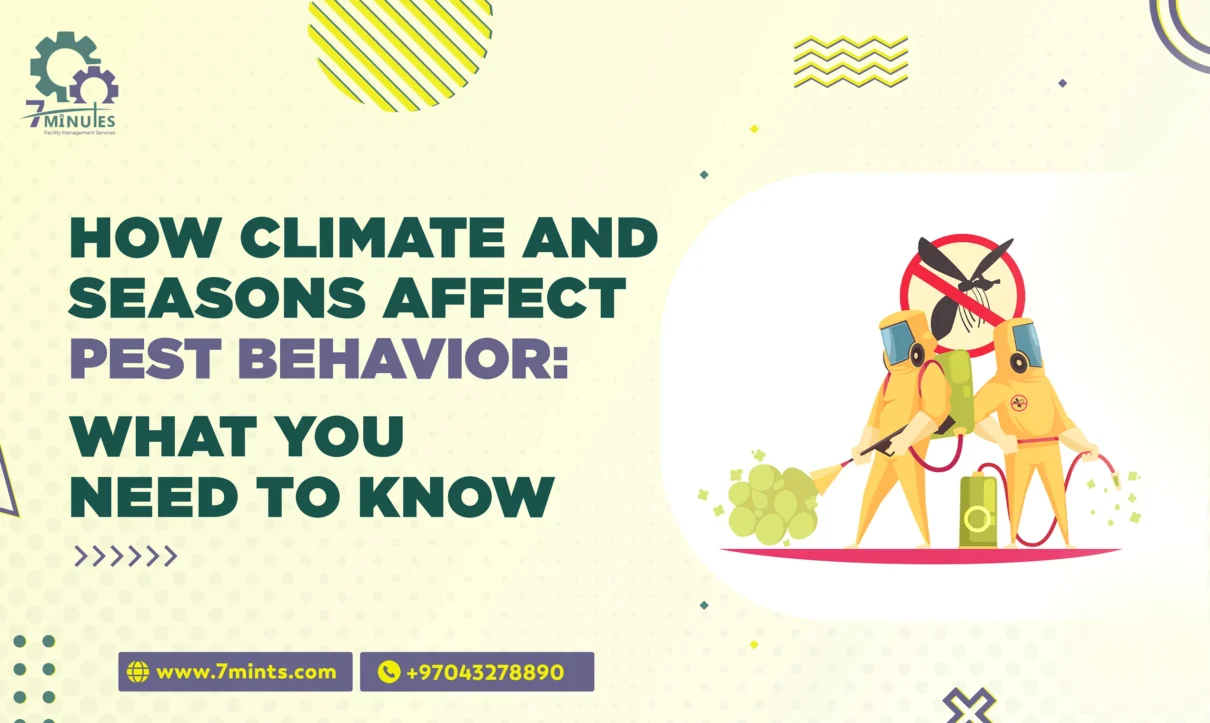
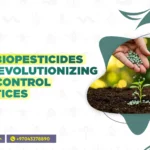
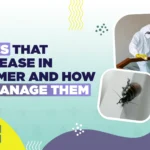
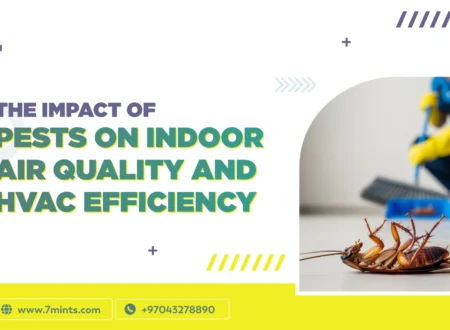


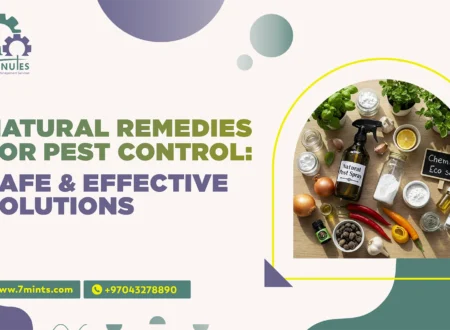

1 Comment
Comments are closed.